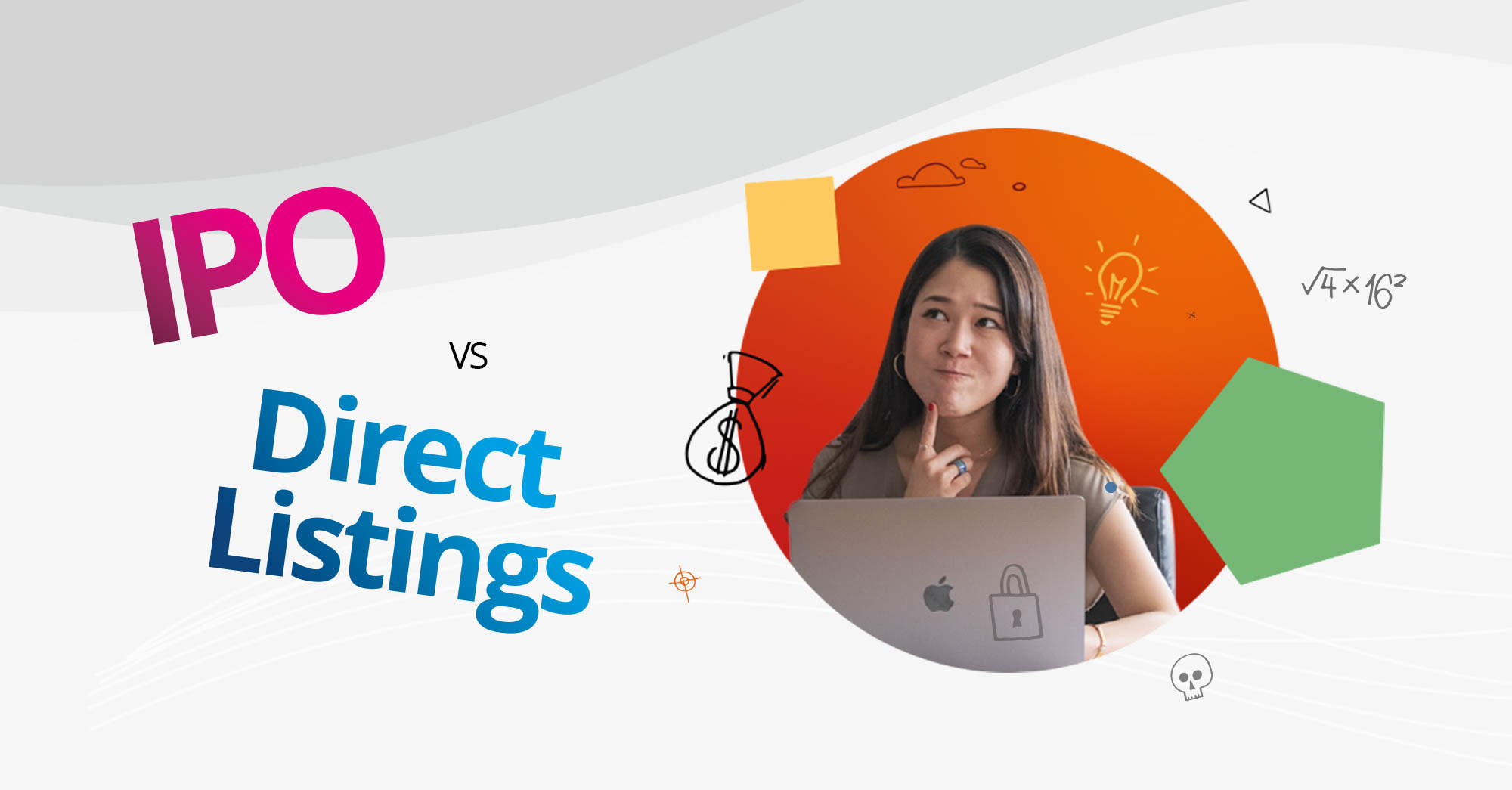Long gone are the days of the traditional IPO. Nowadays, there’s multiple ways to join the public market – which can be overwhelming if you don’t know which one is right for you.
One route that has been growing in popularity over the last number of years is the direct listing. Although relatively new, this method has been used by companies, particularly those in the tech space, that want to avoid some of the red tape that comes with an IPO.
Although direct listings could be considered easier in terms of what’s involved, it’s still a complex topic. So we’ve taken a look at the two to find out how they differ.
IPO vs Direct Listing: What are the main differences?
Firstly, IPOs are geared towards raising capital, and while it’s common for companies going through a direct listing to raising capital either shortly before or shortly after the listing, it’s usually not the main objective.
With a direct listing, the focus is on giving employees liquidity for the shares they hold. When a company goes through an IPO, a new batch of shares are created which are made available to the public, but when a company opts for a direct listing, no new shares are issued. Instead, employees sell their shares directly to the public – hence the name ‘direct’ listing.
If you’re choosing to IPO, underwriters will play a huge role, whereas there is no underwriter involvement in a direct listing. This typically makes them a faster and cheaper option.
However, one drawback is the lack of lock-up period. IPOs always operate with a strict lock-up period, where shareholders are prohibited from selling any of their stock. This protects the company share price as it prevents the stock market from being flooded with shares unnecessarily. While direct listings do have rules about how soon some corporate principals can sell their shares, ordinary employees can usually sell as soon as the listing takes place.
What are the benefits of a direct listing compared to an IPO?
While they may not be for all companies, there are some clear advantages that make them suitable for some. As our recent Own Up podcast guest and Partner at Latham and Watkins, Ben Cohen explains, employees get liquidity on the first day of trading, which acts as an amazing boost for employee engagement.
Direct listings create incentives for employees.
Ben Cohen, Partner, Latham and Watkins

Direct listings are also an overall more transparent process than an IPO. As the price-discovery process is market driven, there is no guess work involved – which is an aspect of an IPO that can cause further complexity and may take up more time.
As stated above, direct listings are far less costly than a traditional IPO and it doesn’t involve any further share dilution as no new shares are created, which is better for all shareholders.
What are the disadvantages of a direct listing compared to an IPO?
If you’re joining the public market with the goal of generating capital, a direct listing is not the way to go. As no ‘new’ shares are put up for sale, a company cannot raise funds. Further to this, as no new shareholders are added, a company must already have a large and diverse base of existing shareholders.
Since there’s no early price discovery system or book-building process, companies have no way of knowing where share prices will open. Likewise, they cannot get shares allocated to preferred investors or institutions. So although it may help to speed up the listing process, it creates a certain level of ambiguity around share price opening and allocation.
The day-one trading for employees can be seen as a huge benefit, but having everything ready to go from the first day on the exchange is a highly time-consuming and complex affair. With an IPO, the lock-up period provides ample time to get prepared.
Again, the ability for employees to sell shares freely on the public market can be viewed as a plus, but this does give employees the opportunity to sell a vast number of shares in a short space of time, which could be viewed as a downside. The freedom given to employees in the form of liquidity can be considered a benefit and for some, a disadvantage, depending on what way you look at it.
How do you ensure your direct listings or IPO runs smoothly?
If we were to ask the experts for their essentials pre-direct listing or pre-IPO tips, what would they say? Well, Brittany Ruiz, Partner at Lathan and Watkins and Own Up podcast guest says this.

It’s all about communication, communication, communication.
Brittany Ruiz, Partner, Latham and Watkins
Make sure to communicate with employees and other shareholders about what’s happening, especially with their equity. You should try to explain it to them as soon as the equity plan is ready to go public because many people are unaware of what they can and can’t do with their shares during a direct listing and IPO.
Make sure there’s someone knowledgeable to answer their questions. Who should be part of the resource team? Include in-house leaders, outside legal counsel, and equity compensation experts (like us at Global Shares).
The goal is for all members of your shareholder base to have a good, profitable experience should they decide to sell their stock, so create a dedicated email address and other direct resources to get accurate, fast answers straight to your employees.
If you’re doing an direct listing or IPO, consider creating a written FAQ about timing, lockup periods, and other relevant guidelines. Inform and educate employees that they can’t sell immediately and will have to adhere to lockup periods (for an IPO) that are often 90 days long. It’s imperative to let employees know what they can and can’t do, how long they’ll have to wait before selling, and why those rules are in place.
Want to learn more about going public in 2022?
Learn more about the latest IPO and direct listing trends, as well as more information on the differences between the two in our latest Own Up episode with Latham and Watkins Partners, Ben Cohen and Brittany Ruiz.
We can help you to go public
Looking to join the public market? Whether its an IPO, a direct listing, or another route, we’ve helped companies from all over the world to go public. Get in touch with us today to learn more about how we can help you join the public market.
Please Note: This publication contains general information only and Global Shares is not, through this article, issuing any advice, be it legal, financial, tax-related, business-related, professional or other. The Global Shares Academy is not a substitute for professional advice and should not be used as such. Global Shares does not assume any liability for reliance on the information provided herein.








